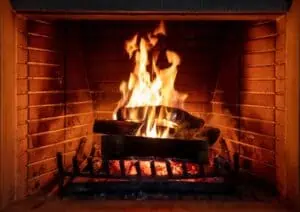How Do You Get Warm Standing in Front of a Fireplace?
Keeping warm is an important skill, and fireplaces can be a great way to do it. However, there are some important things to keep in mind before you fire up a fireplace. For example, there are different kinds of fireplaces, and the different types of heat transfer can affect how warm you are. In fact, if you are sitting too close to a fireplace, you could cause your hair, clothing, or skin to burn. It is important to keep an eye on the fire to make sure it isn’t too hot.
(Searching in Google “gas fireplace insert“? Contact us today!)

The first way heat transfers from the fire to your body are through the air. This is called convection. During a fire, there are three primary modes of heat transfer. These are conduction, radiation, and convection. While these modes can all occur in different types of fireplaces, they are used in all fires. Convection occurs when a flame releases heat waves as radiation, and these waves are carried around the room. A fireplace will usually have a concrete hearth in front of it to prevent embers from landing on your carpet or furniture.
Radiation is the most common form of heat transfer, and when you are standing in front of a fireplace, you will receive more heat. In addition to convection and radiation, the fireplace can also use a secondary mode of heat transfer. It may be called thermal radiation, thermal convection, or thermal conduction. It is important to remember that conduction can be dangerous, as it can allow fine grains of smoke to get into your lungs. This can lead to asthma or other respiratory problems. Alternatively, thermal radiation can speed up the vibrations of cooler molecules.
Another way the fireplace can warm you is through the fire itself. When a fireplace is burning, it releases a lot of smoke. This smoke contains fine grains that can cause asthma and other respiratory problems. The smoke also has nitrogen oxide and carbon monoxide in it, which can cause carcinogens in your lungs. The best way to keep yourself from being exposed to these chemicals is to keep a distance from the fireplace.
The second way heat transfers from the fire to your body occurs through conduction. Conduction is the process of heat passing through a solid object, such as a wood fireplace, or a liquid, such as water. A wood fireplace will usually burn with a concrete hearth in front of it, which is intended to prevent burning embers from landing on your carpet or other furniture. If you are sitting too close to a fireplace, it is important to back up to a safe distance until the fire is comfortable for you. This can take some time, so make sure to keep an eye on it.
In addition to the three ways that heat transfers from the fire to your body, there are also two other processes that take place before a fire begins. These are the convention and the heat exchange. In the convention process, the fire releases fine grains of smoke into the air. These grains can cause asthma, bronchitis, or other respiratory problems. If you are sitting too close to the fireplace, you will likely feel hot immediately. To avoid getting burned, make sure to keep an eye on the fire and back up until you are comfortable.

